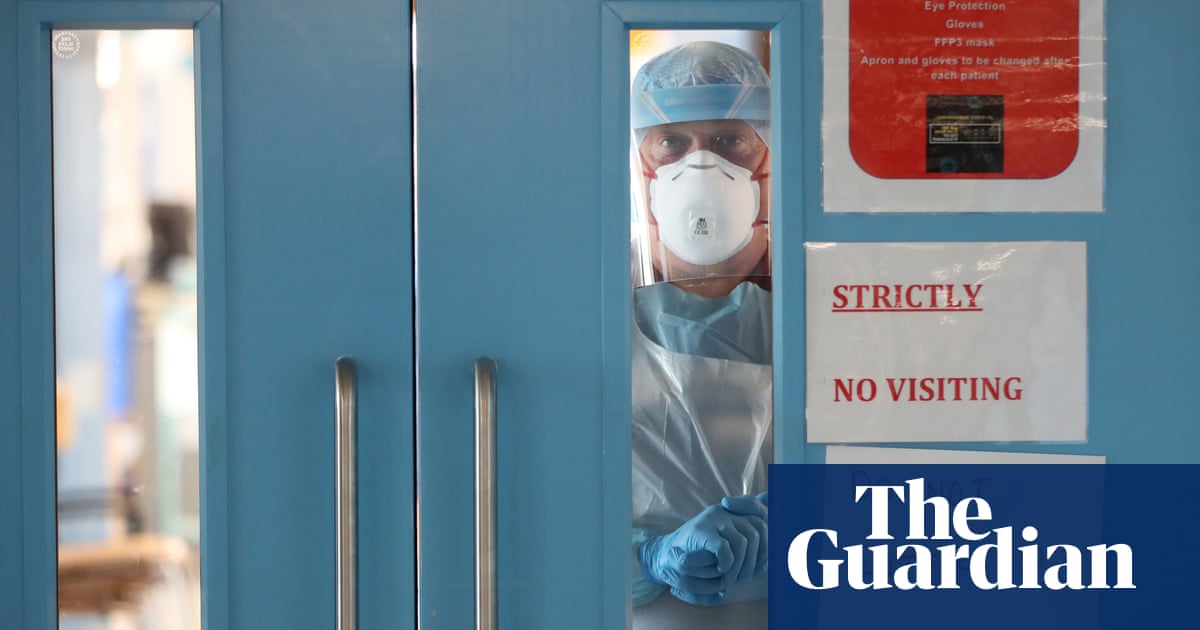
Deaths from Covid-19 are now averaging 100 a day across the UK, according to official data, and scientists have warned that case rates will jump again when millions of pupils return to schools next week.
The seven-day average for deaths within 28 days of a positive test now stands at 100, figures released by Public Health England on Monday show, a number that was last exceeded on 18 March.
Although the vaccination programme means deaths are far below the peaks of last winter – the highest daily total was 1,248, reported on 23 January – it is a notable rise from late May and early June, when they were consistently in single figures.
Confirmed infection numbers have also started to rise once more following a dramatic fall in mid-July, with 31,914 cases reported on Monday, the seven-day average figure having increased 13% from a week before. Hospitalisations have risen from 672 on 31 July to 948 on 17 August.
Adding to the concern is the expectation of increased infection rates when students return to schools and colleges across England, Northern Ireland and Wales, which mainly happens next week. Cases in Scotland, where most pupils went back last week, have risen dramatically, going up from 799 on 2 August to 3,190 on Sunday. While the return of schools may have played a role in the rise, it is unlikely to be the only factor as they reopened so recently.
Some scientists have warned that a likely increase in Covid cases in autumn and winter, coupled with other viruses, could require the return of mitigation measures such as face masks.
Prof Ravi Gupta of the University of Cambridge, a coopted member of the New and Emerging Respiratory Virus Threats Advisory Group (Nervtag), said it was likely there would be a long, protracted period of high hospital admissions and continuing disruption as schools return.
“There is nothing to stop it happening because … there are still a lot of people who have not been infected with Delta and who will get infected, and some of them will become more ill than others,” he said. “So I think there is still a way to go with this. And yes, it is going to coincide with schools reopening and of course you have waning immunity as well.”
Gupta said the possible reimposition of rules on mask wearing was “a no-brainer … because it presents the caution associated with limiting transmission without necessarily having a big impact on your freedoms”.
Prof Rowland Kao of the University of Edinburgh, a member of the government’s Scientific Pandemic Influenza Group on Modelling, or Spi-M, said that while more time was needed to see if the recent rise in hospitalisation is sustained, the trend did appear to be in that direction.
He said: “As we know, the total number in hospital in England last winter peaked at over 34,000; the current number is less than 6,000, so thankfully we are well away from this. However, observed rises in cases in Scotland in the last week have been substantially more dramatic than in England and test positivity has also increased. It is reasonable to think that this may be associated with the return to schools and the other activities that increase with it.
“Should this be the case, and a similar phenomenon occur when schools return in England, cases, and therefore ultimately hospitalisations, will also likely increase.”
Mary Bousted, joint head of the National Education Union, said teachers needed more support from government, arguing that plans to fit schools in England with air-quality monitors would “only diagnose an issue”.
She said: “Leaders will also want to consider continuing with face coverings in secondary schools, social distancing where possible, and special arrangements for vulnerable staff.”
Separately, unions have said that start-of-term Covid testing for secondary pupils and college students will almost certainly cause some disruption to their return. Department for Education guidance says secondary school pupils in England should be tested twice on site on their return for the autumn term, between three and five days apart.
Geoff Barton, head of the Association of School and College Leaders, said this would “inevitably mean some disruption during the first week of the new term”.
The local authority reporting the highest weekly UK case rate is Fermanagh and Omagh in Northern Ireland, with close to 1,000 cases per 100,000 residents as of 18 August. The tourism-heavy south-west of England is also reporting high case rates, with five of the 10 areas with the highest rolling case rates in the region.
Source: Guardian




